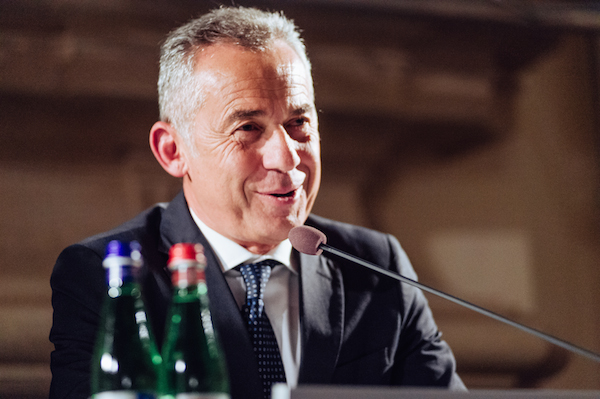
Dialogue with Maurizio Reggiani, Research & Development Director at Automobili Lamborghini
24 December 2015“A brand such as Lamborghini has lived and continues living because it always innovated, in order to create the best products in its market segment. Innovation is the soul of every model, it’s targeted at the product and its nature must be such as to be perceived by our customers”. The word of Maurizio Reggiani, Research & Development Director at Automobili Lamborghini, protagonist of the fourth talk of the Innovation Talks at Bologna Business School.
One fourth of Lamborghini’s employees operate in the department you manage. How are the research and development activities organized, and which percentage of the turnover are you investing in R&D?
The R&D sector is one of the most complex organizations we have inside the company. The activity is organized according to a matrix structure, where on the columns one can find the skills (the various automotive disciplines among which, for instance, materials science) and along the lines one can find the projects. This allows us to pour competence and experience into each project, and leave nothing to chance. As for R&D investments, Lamborghini is top of the class: research is crucial for us in order to ensure the rate of innovation that our products necessarily need to have. In the past few years, on average, we invested 20% of our turnover in R&D. If one compares this percentage to the average in the automotive sector, i.e. around 5-6%, one can have a more precise idea of the extent of our commitment. Over the next two years, this percentage might increase up to 30%, in order to support the development of Urus.
What is the difference in the development of a car destined to nine customers, such as Veneno, and a large-scale model?
For our one-off vehicles, we deploy bold solutions that cannot be included in the manufacturing process in a short time. Or, even, ones that will never be produced because of the level of complexity in manufacturing the artefact. Vehicles such as the Veneno are technology labs, in which designers and engineers can measure up against challenges that go beyond the state of the art (even though we’re talking about super sports cars). And in this sort of lab-gym we put together technical solutions, new materials, innovative engineering, and this can only be done because these cars are created within the R&D and not in production.
Experts of aerodynamics and designers worked closely together on the Veneno. What’s the relevance of the team work in finding the right balance between design and technological innovation?
Producing an engineering masterpiece like the Veneno requires the work of many players who, since the very beginning, must be able to communicate among them and work together. The different skills must be available right from the the primeval stage of the project, the people involved must learn to respect the needs of the other functions. This way it’s possible to find the right balance, combining design, aerodynamics, packaging and set-up of the vehicle. From this point of view, our R&D matrix organization works really well.
Despite Lamborghini being open to international markets, its headquarters never moved and the only manufacturing plant is in Sant’Agata Bolognese. Why?
I believe the territory is fundamental for a car and for a brand such as Lamborghini, Emilianità [being from the region Emilia Romagna] is an added value. Even in an aseptic sector like engineering, passion makes the difference. Despite the changes in the ownership, and we currently have a German shareholder, the specificity of being in Emilia Romagna, of being in this territory, allows us keeping that DNA typical of our area.
What is your definition of innovation?
Innovation means being able to think and create something the others can’t even envisage. Innovation though can’t be an end in itself. We can talk about innovation only when the novelty introduced can be applied to a product – a car in our case – and if there’s someone who can make use of it.
What is the role of the human factor in innovation?
It accounts for 99%. Only people’s creativity can lead to innovation. No computer, no data centre will ever be able to think something that doesn’t exist. They can process something that exists, but certainly not create one that doesn’t.
What would you suggest to a student who’d like to work for a company like Lamborghini?
Study hard and be open, which also means being a good communicator. Often, the competition, even among engineers, is geared towards making oneself understood, believed, to get credit. It’s not rare that it becomes a question of getting there the first time round, because not necessarily one will be given the time to demonstrate it with facts. Of course, the cultural background is fundamental, but I believe that as for this aspect, our universities and schools of excellence produce the best that can be.
Would you like to read more Dialogues with BBS Community lecturers? Please click here.
